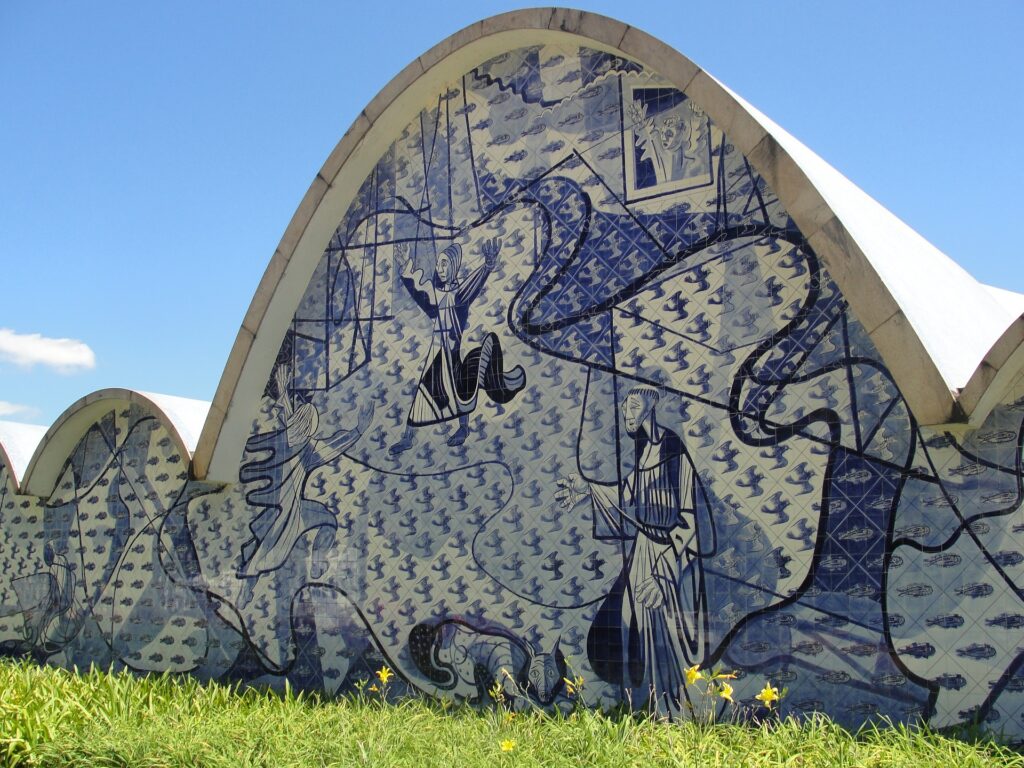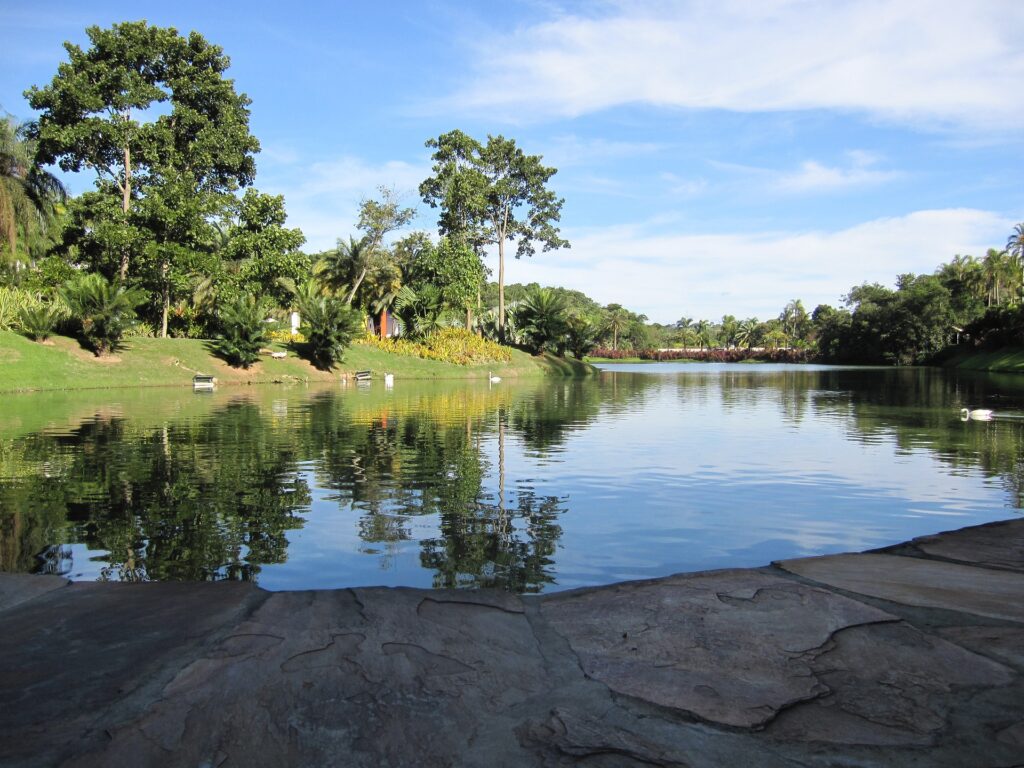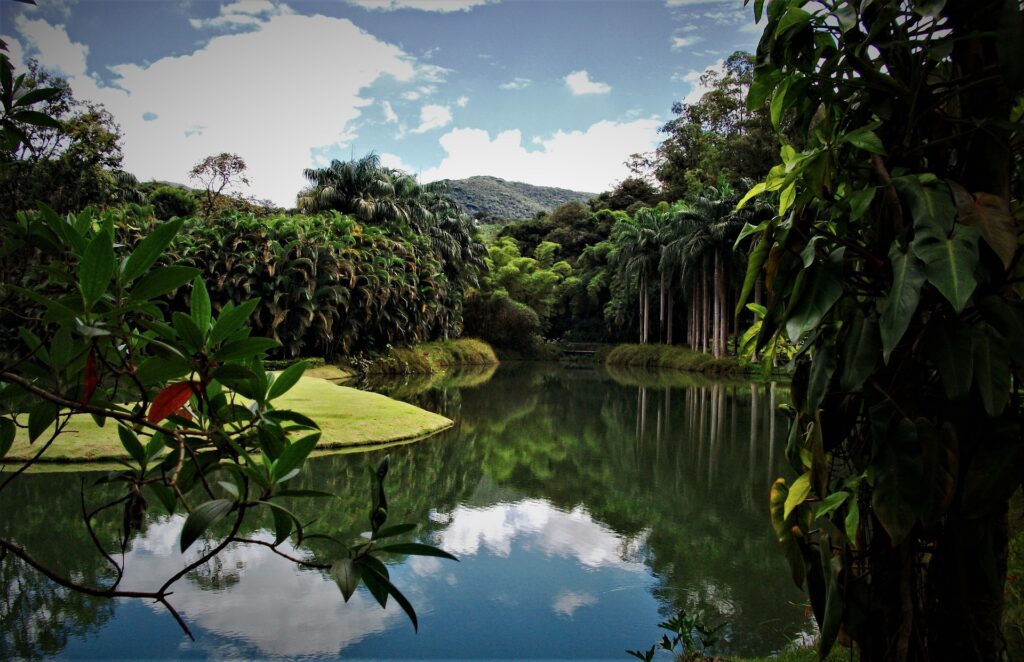Situated in the small town of Brumadinho, roughly 60 kilometers southwest of the bustling city of Belo Horizonte in Brazil’s Minas Gerais State, Inhotim is an extraordinary confluence of contemporary art, lush botanical landscapes, and innovative architecture. It is a place where art and nature intertwine harmoniously, offering an immersive experience like no other. Founded by Brazilian mining magnate Bernardo Paz in 2006, Inhotim quickly ascended to become one of the world’s premiere cultural destinations. Spanning over 5,000 acres, the institution encompasses contemporary art galleries, outdoor sculptures, thematic gardens, and native forest reserves.

The Genesis of Inhotim
The genesis of Inhotim can be traced back to Bernardo Paz’s vision of creating a space where art and nature coexist symbiotically. Initially a private garden, the concept gradually evolved into a public institution dedicated to contemporary art and environmental conservation. Paz invited numerous artists, architects, and landscape designers to contribute to the creation of an expansive, interactive space that blurs the lines between gallery, garden, and open space.
More:Read about on Baños, Ecuador: The Gateway to Tranquility and Adventure
Architectural and Artistic Marvels
Inhotim houses more than 500 works of art, including sculptures, paintings, drawings, and installations by both Brazilian and international artists. Noteworthy contributors include Hélio Oiticica, Cildo Meireles, Yayoi Kusama, and Olafur Eliasson. Pavilions and outdoor installations are strategically placed within the botanical garden, each creating a unique dialogue between the artwork and its natural surroundings. Some of these pavilions are architectural masterpieces in their own right, designed by acclaimed architects such as Eduardo Souto de Moura and Paul Cezar Rivaldo.

Collection and Artworks
The collection at Inhotim is a bold representation of contemporary artistic expressions. One of the iconic installations is “The Cosmococa Program in Progress” by Hélio Oiticica and Neville D’Almeida, located in a dedicated pavilion. This immersive experience combines slide projections, ambient music, and interactive spaces to engage visitors in a multi-sensory dialogue.
Another landmark installation is Chris Burden’s “Beam Drop Inhotim,” a dramatic ensemble of steel beams dropped from a considerable height into a concrete pit, created live before an audience. Matthew Barney’s “De Lama Lamina” is another experiential installation, a mechanized tree that emerges from the ground, blending mythological narratives with technological fascination.
Carroll Dunham’s “Geeky House” and Doug Aitken’s “Sonic Pavilion,” where visitors can hear the sounds of the Earth’s core through a deep-well microphone, exemplify the diversity and immersive nature of the art showcased. Yayoi Kusama’s “Narcissus Garden,” featuring mirrored spheres placed on a serene pond, evokes themes of infinity and reflection, urging visitors to ponder on their place within the universe.
The Botanical Garden
Inhotim’s botanical garden is an Edenic landscape of meticulously curated thematic gardens, lakes, and forest trails. Conceived initially as an artistic garden, it rapidly evolved under the direction of a team of botanists and landscape architects. The botanical garden features over 4,500 plant species from around the globe, including a vast collection of rare and endangered species.
A highlight within the garden is the Palm Collection, holding more than 1,400 species of palms, a stunning testimony to biodiversity. The Orchidarium is another jewel of Inhotim, home to hundreds of orchid species, some native to Brazil’s Atlantic Forest. The thematic gardens include areas dedicated to Brazilian flora, with endemic species arranged to form cohesive landscapes. Visitors can wander through these natural compositions, experiencing a sensory journey through diverse ecosystems.

Environmental and Social Initiatives
In addition to being an art and botanical sanctuary, Inhotim is deeply committed to environmental conservation and social engagement. The Instituto Inhotim works tirelessly on ecological restoration projects, reforestation efforts, and the preservation of endangered species. An ongoing partnership with local communities aims to foster environmental education, cultural inclusion, and sustainable development.
The institute also promotes various educational programs, offering workshops, guided tours, and artist-led projects to engage visitors and students alike. These efforts aim to inspire a deeper appreciation for both contemporary art and the natural world, cultivating future generations to be more environmentally conscious and culturally aware.
Visitor Experience
Visiting Inhotim is an exploration of both mind and senses. The sprawling grounds invite leisurely strolls, allowing visitors to serendipitously discover hidden artworks amidst botanical beauty. Electric buggies are available for those who prefer a guided tour, with knowledgeable guides providing insights into the artworks and plant species. Cafes and restaurants scattered across the property offer opportunities to rest and savor local cuisine, while gift shops provide unique mementos.
Must Visit:odishashop.com
The visitor experience is designed to be inclusive and participatory, encouraging guests to engage directly with both art and nature. The expansive layout means that no two visits are the same; the changing seasons bring different blooms and foliage, while rotating exhibitions ensure a dynamic art-viewing experience.

Conclusion
Inhotim in Brumadinho is a testament to the transformative power of art and nature. It stands as a beacon of contemporary cultural expression, environmental stewardship, and artistic innovation. As visitors traverse its verdant paths, they are not merely spectators but active participants in a grand dialog between humanity, art, and the natural world. Inhotim’s unique synthesis of these elements creates not only an unmissable cultural destination but also a profound journey that inspires and rejuvenates. It is a place where life, in its myriad forms and expressions, is celebrated and reimagined, offering a microcosm of beauty, creativity, and introspection.
FAQ For Brumadinho (Inhotim), Brazil: Art Museum in a Botanic Garden
What is Inhotim?
Inhotim is an expansive outdoor contemporary art museum located in Brumadinho, a city in the state of Minas Gerais, Brazil. It is renowned for its unique combination of art, botanical gardens, and natural landscapes.
What makes Inhotim special?
Inhotim stands out for its vast collection of contemporary art, which is exhibited within a sprawling botanical garden landscape. The museum’s fusion of art and nature creates an immersive and unparalleled experience for visitors.
Can visitors explore the entire museum in one day?
Due to the museum’s extensive grounds and diverse collection, it’s recommended to allocate at least a full day to explore Inhotim thoroughly and appreciate its offerings.
Are there dining options available on the premises?
Inhotim offers a variety of dining options, including restaurants and cafes, where visitors can enjoy meals and refreshments amidst the museum’s picturesque surroundings.
What should visitors keep in mind when visiting Inhotim??
Visitors should wear comfortable walking shoes, carry sun protection, and stay hydrated, as Inhotim’s vast area requires significant walking. Additionally, respecting the art, nature, and other visitors is essential for a pleasant and respectful experience

